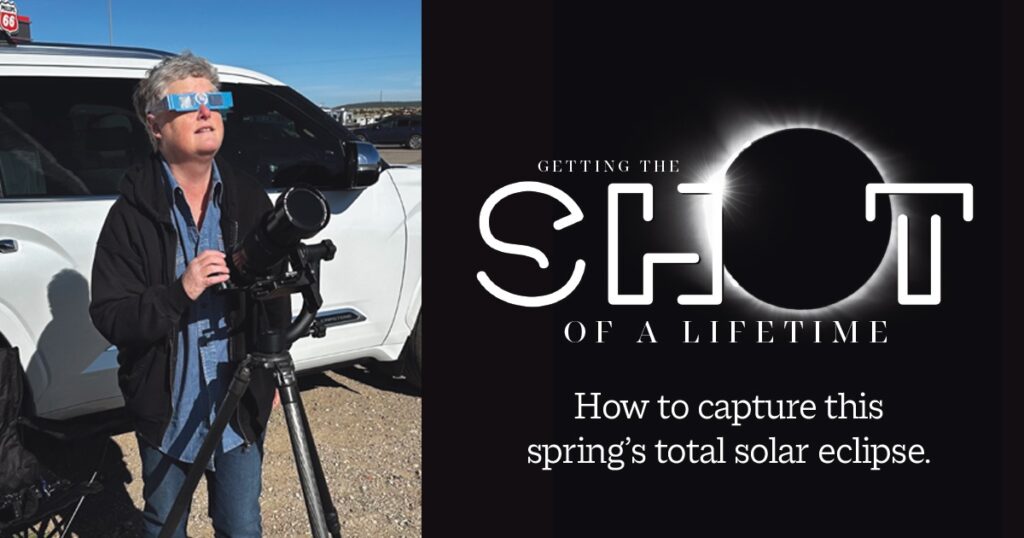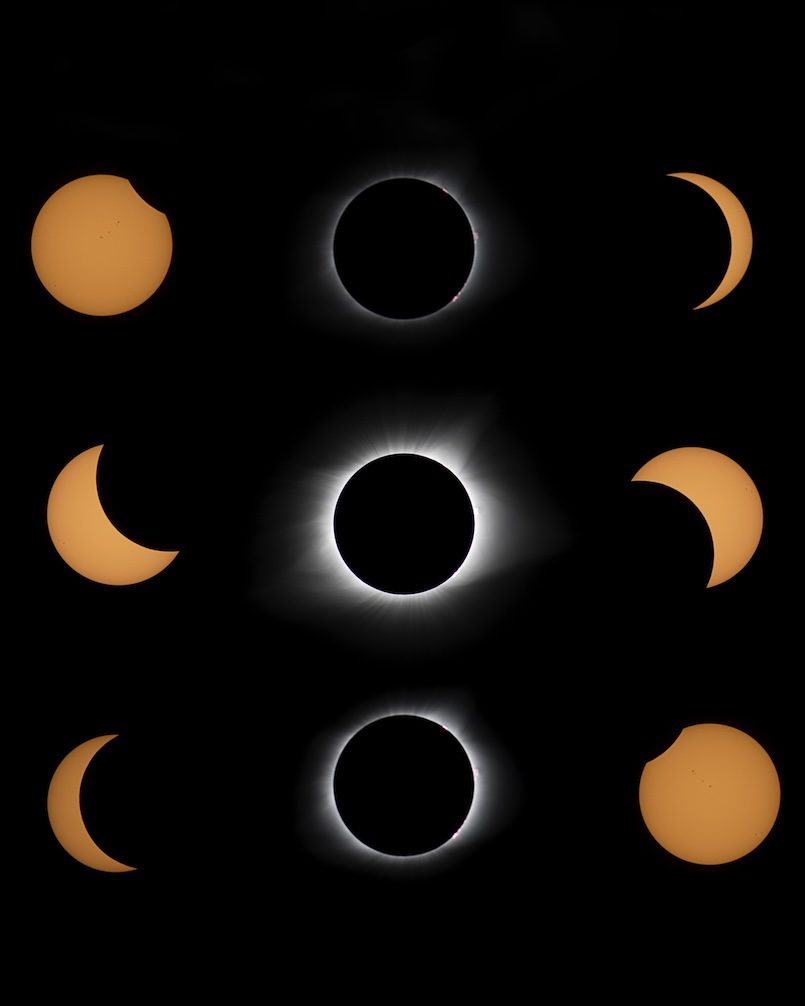01 Feb 2024 Getting the shot of a lifetime
By Linda Henderson
In case you never look at social media, television news or read a newspaper, you might not be aware of the upcoming solar event that will happen April 8.
There will be a total solar eclipse that will pass directly over the 501. The extraordinary thing about this event is the amount of time that our area will be in total darkness. The entire 501 area code will experience three to four minutes of total darkness in the middle of the day. This event will attract thousands of people to our state. A wide range of individuals are interested in recording this total solar eclipse—amateur photographers, professional photographers, eclipse chasers and scientific observers.

A total solar eclipse occurs when the moon passes directly between Earth and the sun. Arkansans will see one of nature’s greatest displays. The good news for those of us living in Central Arkansas is we will not have to go anywhere, rent a hotel room or drive great distances. All we will have to do is look up.
Due to the rarity of the event, most who observe it will want to photograph it. Capturing the eclipse will require only a few special pieces of equipment. The few moments of darkness (totality) will require a tripod or a way to stabilize a camera. Eye protection is the most important consideration of photographing a total solar eclipse. Permanent damage to your eyesight and even blindness can occur if you look directly at the sun with your naked eyes. Always wear certified solar viewing glasses when viewing the sun before and after totality. The only time it is safe to view the sky with a naked eye is during the period of total darkness. Cameras also require protection from the light of the sun during an eclipse. Solar filters are needed to protect the optics and the internal electronics of a camera. Also, viewing the eclipse through the viewfinder of an unfiltered SLR camera (older model camera) magnifies the intensity and brightness of the sun and can damage eyesight.

The upcoming event will be my fourth eclipse to photograph. The first one I attempted to capture was in 2012. It was a partial eclipse, and it was the start of a fascination I have for solar events. In 2017, I was able to travel to Kentucky to photograph the “Great American Total Eclipse.” In October of 2023, we headed to New Mexico, and I was able to take pictures of the annular or ring of fire eclipse.
In case you are interested in learning more about the technical aspects of photographing the total eclipse in April, I will be teaching a class at Bedford Photography in Little Rock. The class will be Feb. 8 from 6:30 pm to 8:30 pm. More information about the class and cost can be found at bedfords.com.

Tips for a successful and fun day capturing the total solar eclipse.
• Check the focus on your camera before the eclipse begins; even a cellphone lens can be focused by simply touching the screen.
• Check your batteries as this is a long event, and you don’t want to miss it because the battery died.
• Remove the solar filter during totality but replace it after the end of totality.
• Don’t make fixed plans as you might want to change locations. Arkansas weather can be a bit unpredictable in April.
• Don’t get so involved in taking the picture that you forget to enjoy the eclipse.
• Get pictures and videos of the people around you who are enjoying seeing the moon’s shadow covering the sun.
• Make a memory. This is an event of a lifetime.
- Landscapes of liberty - June 30, 2024
- Getting the shot of a lifetime - February 1, 2024
- The road to Gothic Mountain - October 9, 2023











